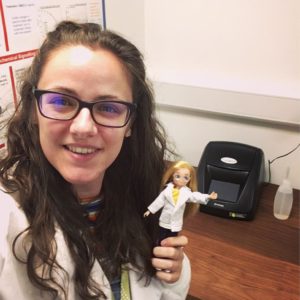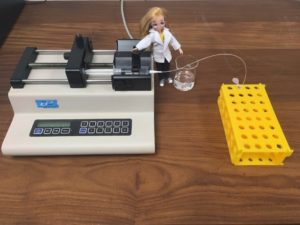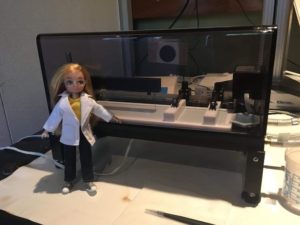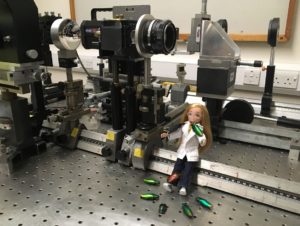 Beth McGill is a 3rd year PhD researcher in the Biomedical Physics Group. Her research investigates the mechanical properties and biochemical signalling of the human red blood cell and how these are affected by certain diseases, like diabetes mellitus.
Beth McGill is a 3rd year PhD researcher in the Biomedical Physics Group. Her research investigates the mechanical properties and biochemical signalling of the human red blood cell and how these are affected by certain diseases, like diabetes mellitus.
November 5th – 9th marked Tomorrow’s Engineers Week, a week dedicated to highlighting the opportunities available to young people in the Engineering and wider STEMM fields. Numerous outreach projects are run throughout the week and this year I found myself involved with one run by the Women’s Engineering Society (WES). I found their project whilst scrolling through my Twitter timeline and decided that it was perfect to get involved in!
The project #LottieTour is in its third year and I was tasked with bringing a small doll to work with me and creating a picture diary of what we got up to for a week, which baffled my supervisor! The diary would then be shared over social media during Tomorrow’s Engineers Week. By placing the realistically proportioned Lottie Dolls in actual STEMM settings, the aim is to capture the imagination of young girls and boys and expose them to the variety of careers available in the field.
Lottie joined my research group in mid-October and as with any new starter, a lab induction is the first thing that needs to be ticked off the list. She was given a tour of the Biophysics wet lab, seeing where we prepare our samples and the equipment we use to do so. 
On day 2, Lottie performed an experiment to see how much ATP is released from red blood cells (RBCs) as they are squeezed through the narrow blood vessels. ATP is an important signalling molecule in the microcirculation that aids the RBC in controlling local blood flow. It can be measured using the enzyme luciferase, found in fireflies, that catalyses a reaction to produce light. Lottie can be seen with our shearing device, a syringe pump used to push blood though a narrow cannula, mimicking blood flow through our blood vessels.
 My working day on Wednesday is usually filled with data analysis and group meetings – not very exciting for our guest – but in the evening Lottie joined my Brownies (aged 7 – 10 years old), to talk about her Tour. They were all very excited to hear that Lottie had travelled to the International Space Station with Astronaut Time Peake in 2015!
My working day on Wednesday is usually filled with data analysis and group meetings – not very exciting for our guest – but in the evening Lottie joined my Brownies (aged 7 – 10 years old), to talk about her Tour. They were all very excited to hear that Lottie had travelled to the International Space Station with Astronaut Time Peake in 2015!
The penultimate day of Lottie’s tour saw her investigating how toxins interact with the cell membrane, using a Langmuir Trough (as pictured), and on the final day, Lottie experienced work of the wider  Biophysics group. She first spent the morning investigating Natural Photonics, looking at how structure can give rise to colour using insects for inspiration, and the afternoon learning all about how Super Resolution Microscopy can be used to image protein structures within our cardiac muscle tissue.
Biophysics group. She first spent the morning investigating Natural Photonics, looking at how structure can give rise to colour using insects for inspiration, and the afternoon learning all about how Super Resolution Microscopy can be used to image protein structures within our cardiac muscle tissue.
Lottie’s Exeter time is now available to see on Twitter (@BethMMcGill) and you can use the hashtag #LottieTour across all social media platforms to see the full extent of her tour. If you would like to get involved next year, please contact WES and let them know!
